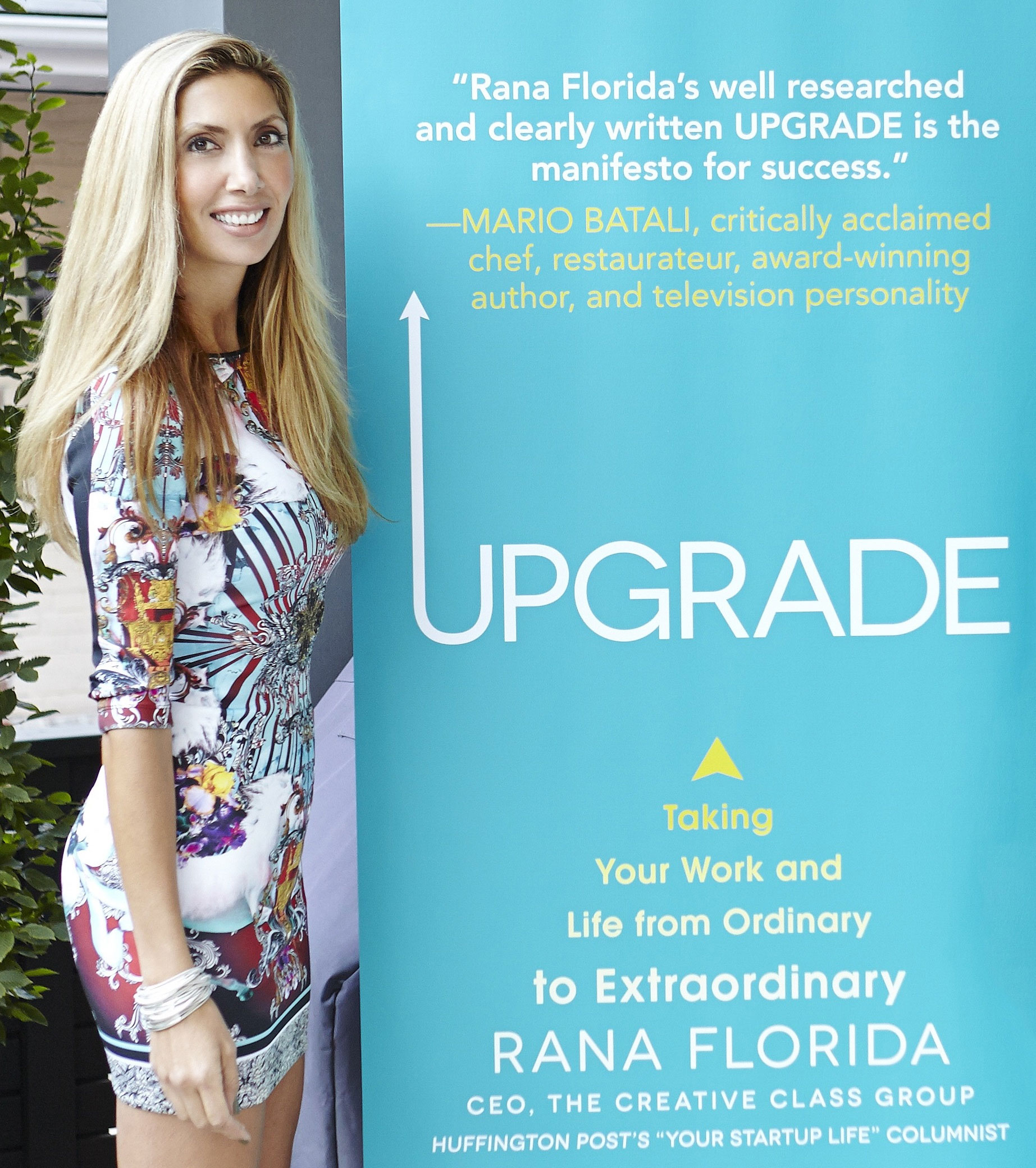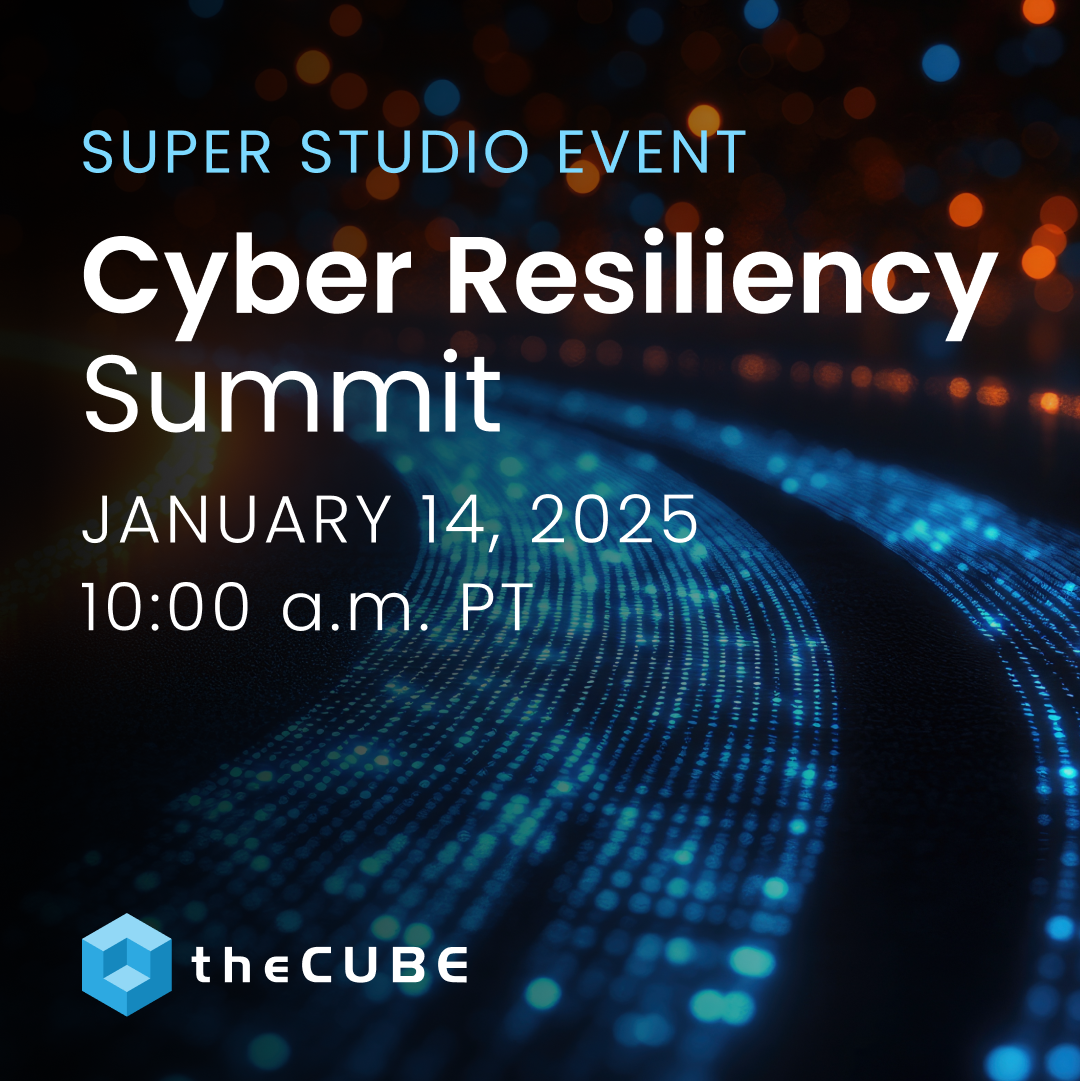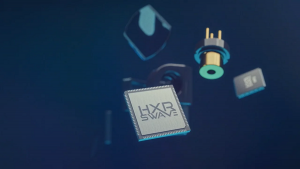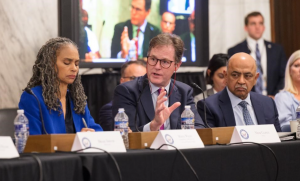When a growth hack is not enough: Rana Florida explains the ultimate “Upgrade” #CultureBYTE
 It’s not surprising that “growth hack” has become a popular buzz phrase for techies. Created by technology startups to drive rapid growth through cost-effective marketing, growth hacking may drive a quick and significant rise in users and revenue. Who wouldn’t want more money and recognition, fast and abundantly? Rana Florida, is the CEO of Creative Class Group and Huffington Post’s “Your Startup Life” columnist. Her recent book, Upgrade, brings perspective to the growth hack fix. Upgrade suggests that if technology entrepreneurs don’t change the way they view growth and success, a “growth hack” can only have so much impact.
It’s not surprising that “growth hack” has become a popular buzz phrase for techies. Created by technology startups to drive rapid growth through cost-effective marketing, growth hacking may drive a quick and significant rise in users and revenue. Who wouldn’t want more money and recognition, fast and abundantly? Rana Florida, is the CEO of Creative Class Group and Huffington Post’s “Your Startup Life” columnist. Her recent book, Upgrade, brings perspective to the growth hack fix. Upgrade suggests that if technology entrepreneurs don’t change the way they view growth and success, a “growth hack” can only have so much impact.
Chasing growth hack success stories like Twitter and LinkedIn, entrepreneurs change externals like their landing page, automate distribution and force virality. Although these growth hack techniques may work, ultimately, businesses grow or stagnate, succeed or fail, from the inside out. Many successful technology entrepreneurs like Mark Cuban and Tony Hseih, who Florida personally interviews for Upgrade, perform deeper work to expand their ventures. Most notably, they have unconventional perspectives on failure and success, viewing both as illusions (as both are stepping stones). Florida also argues that thriving companies trust their employees as colleagues who can manage their own time so efficiently that they don’t need the standard work week or supervision. Sure, Facebook has achieved a lot of success with growth hacking, but Florida believes their motto on failure: “Move fast and break things,” has been foundational to their peaks.
In this interview, Florida shares how an “anti-corporate” culture improves profit margins for leading companies like Zappo’s and 37Signals (and why it will do the same for you) and the most common thing entrepreneurs make harder than it needs to be. She also provides key examples from technology companies to illustrate why nothing succeeds like failure.
One of your interviewees is Tony Hseih, Zappos Founder and CEO, who is known for his unconventional approach to employee relationship building. When you met him, he told you, “We don’t shake hands, we hug.” Between the intimate engagement, open floor plan and nerf balls, Zappos seems like a fun place to work. However, some executives may think this type of work environment would invite a culture of unprofessionalism that would ultimately be unproductive. Why has this not been the case? How does a relaxed work environment translate into profit?
When you walk into Zappos, and anyone from the public can take a tour — I highly recommend it — the first thing you’ll see is the welcome desk with a wall of cut ties which reinforces their anti-corporate culture. They have this amazing culture of “delivering happiness.”
Workers value so many other things than monetary rewards: They value the opportunity to be themselves, manage their time, have flexible work schedules, express themselves, dress how they want, and be appreciated for their skills and expertise. If employees feel respected and valued they will be more loyal, more engaged and more productive; and that translates to less turnover with harder workers who are contributing to the bottom line.

You also discuss the importance of not monitoring employees’ time, but the quality of their work. Why do you think some companies have been resistant to this? What are they missing out on?
When I began as CEO at the Creative Class, I told my team members that I was not their boss. Early on, I realized the value of changing my vocabulary. Subordinate, employee, and staff became colleague and team, because ultimately that’s what we all are in the workplace.
“Please don’t call me boss, don’t send me approvals like I’m your boss, don’t ask for approval to go on vacation. There is no vacation request form,” I said. “We are all colleagues. You are getting paid for your expertise. I am not going to do performance reviews or expect status reports. It is up to you to manage your own workload, to manage the clients, and to deliver a quality service.”
“I don’t care when you work, how you work, or where you work,” I told them. A few of them did not understand and still wanted to report in to me. I had to constantly remind them not to fill up my in-box with such trifles. “Great, you’re going on vacation with your kids and won’t be checking e-mail,” I’d respond. “Have fun. Find a colleague to manage your clients and make sure your clients know how to reach them.”
As I wrote in Upgrade and told Fast Company:
Josh Patrick, the founder and principal at a financial advisory services firm, told the New York Times, “One of the things we constantly told employees was the following statement: ‘You are the expert at your job.’ It took several years for some of our people to actually believe it. But I’ve used this mantra in my business life ever since. The key is that when you make this change, you stop telling people what to do and you start asking them their opinion about the best way to get something done. This can produce all sorts of benefits.”
Jason Fried wrote an op-ed piece for the New York Times on managing time at his software company, 37signals:
We take inspiration from the seasons and build change into our work schedule. For example, from May through October, we switch to a four-day workweek. And not 40 hours crammed into four days, but 32 hours comfortably fit into four days. We don’t work the same amount of time, we work less.
Most staff workers take Fridays off, but some choose a different day. Nearly all of us enjoy three-day weekends. Work ends Thursday, the weekend starts Friday, and work starts back up on Monday.
The benefits of a six-month schedule with three-day weekends are obvious. But there’s one surprising effect of the changed schedule: better work gets done in four days than in five.
When there’s less time to work, you waste less time. When you have a compressed workweek, you tend to focus on what’s important. Constraining time encourages quality time.
Managers should stop behaving as prison wardens, keeping a watchful eye on their inmates. We live in the knowledge society where most work can be performed remotely. Giving your team the freedom and flexibility to work from where they want, when they want is possible, if you give them clear expectations on workload. Let them manage the quality of their work and judge them on their quality and productivity and not if they are clocking hours at their desks.
Being productive does not translate to being busy.
A major theme of the book is broadening our understandings of success and failure. Kenny Scharf and Andre Agassi both told you: “There is no such thing as failure.” From Mark Cuban to Nelly Furtado, all the insights on re-thinking failure were really empowering to me; this whole time I was fearing failure, I was fearing an illusion. What would be the big takeaway you want the reader to understand about failure as they aim to Upgrade?
We set up children from a very early age to believe that only success is rewarded, especially when it comes to school or work. This, however, is very unlike the way we learn.
The world-renowned creativity expert Sir Ken Robinson, who I also interviewed, has observed that you can’t learn or create anything new unless you first open yourself up to the possibility of being wrong.
Sara Blakely is the outrageously successful entrepreneur who founded the undergarment company Spanx. In his profile of her in The Startup Playbook, David Kidder relates that “when she was a little girl, her father would ask her, ‘What did you fail at today?’ He made it clear that failure was an indication that you tried something. It was a good thing. That’s a profound idea, and it speaks against many of the assumptions of our success-based culture.”
Most of us need to reset our definition of failure. Too many of us view business setbacks as something we haven’t been able to accomplish, or worse still, as shameful marks that we can never erase.
Far too many of us waste too much effort and emotional energy dwelling on past failures instead of pushing forward. Andre Agassi told me, “Success and failure are so often the result of outside factors, things beyond our control, so you need to keep your mind on the few things you can control. Learn to love the process, the work, and disconnect your ego from the results. The earlier you learn this, the more peaceful you’ll be, and peace, not success, is the goal.”
You show that upgrading your life is not just about going out and making things happen, so much of it is about getting your mind right and clearing out the ways you are blocking your goals. When I realized how powerful I was at sabotaging myself, I saw how powerful I was – period. What does it mean to fear professional success? Why do we fear the things we really want in business?
We are brought up as children to get good grades, get on the right team, and score the winning goal. If we fail the class, we won’t get into a good school; if we don’t get into a good school, we won’t get a decent job; and if we don’t get a decent job, we’ll be living at home with our mom and dad for the rest of our lives or living on the streets, and everyone will know we’re a failure. We set up children from a very early age to believe that only success is rewarded, especially when it comes to school or work. This, however, is very unlike the way we learn.
For most people, assessing and accepting risk takes a severe emotional toll; it causes fear and confusion and it can lead to stress and fatigue. Life is already risky, so many of us think: “Why rock the boat?” But, most successful leaders, thinkers and innovators understand that new opportunities and rewards come only after taking risks. Facebook’s motto is “Move fast and break things,” meaning, it’s okay to take a chance on several things at once. But, the harsh reality is that most of us are not rewarded at work for taking risks.
Curiosity is stifled in a risk-free environment. Steven Bathiche manages the applied science group at Microsoft, where he helps develop new ideas and technologies. I heard him speak at the Creativity Conference in Washington, D.C., on the critical importance of encouraging stupid ideas. He says: “People laughed at the guy who wanted to put seat-belts in cars,” he said. “People were like, this is really stupid.” That logic lasted a full decade. “In the creative process, things that might seem unlikely or out of the ordinary are so only because of your frame of reference,” he continued. “And your frame of reference is always changing.” Ten years or five years from now, he explains, when one of your absurd ideas comes of age, it won’t seem stupid at all.
You say you always try to find a way to say yes. Do you think this attitude of yes is applicable to investors as well? They have to turn down many opportunities to protect their financial interests. Is it possible for investors to say “no,” but yes to potential ventures?
“No, No, No, No, No,” we live in a big fat “no” society. I’m not saying throw your money out the window and make bad investments. But, too often many of us go straight to a no answer for fear of trying something new, taking the time to learn something new, bureaucracy or other lame excuses.
In Upgrade, I suggest finding your way to a yes answer. For creativity to rise and shine, it needs a yes environment. In business as in life, you need to surround yourself with a team that is ready to say, “Yes, let’s give it a try,” “Yes, let’s do it—the worst-case scenario is we’ll learn something,” and “Yes, I’m in!”
Squelchers are people who instinctively throw water on new ideas: “No, that won’t work,” “No, we can’t do it that way,” “That idea is crazy. It will never fly.” Apple and several other companies were garage startups with a rag tag team of braniac hippies but did they fit the corporate mold? Were they in an office wearing suits? Did they look professional? Too often we box ourselves into a cookie cutter formula. As Apple says, “Think Different.”
Finally, what is one aspect of professional development you believe people make harder than it has to be?
OMMMMMGGGGGG, it’s amazing how quickly people will make excuses, ‘school’s not for me,” or “I just don’t have the time,” or ‘it’s too expensive.” For the love of God people, if you can’t invest in yourself who can you invest in! Learn, grow, discover, do it!

Was there a particularly important Upgrade you decided to make personally through this book?
TIME!!! I am now a drill sergeant with my time. I learned so much from the amazing cast I interviewed. Andre Agassi really taught me that time is more important than material wealth and possessions, he said “People chase money and forget that time is our most precious resource.”
As stated in the book: “Researchers in the 1990s gave this familiar, if dreadful, feeling a name: time famine. More recently, they coined a term to describe the opposite: time affluence, that elusive feeling of being rich in time. Time affluence, it appears, has real benefits in our lives. If time famine can create a state of rolling personal crisis, studies have shown that feeling ‘time affluent’ can be powerfully uplifting, more so than material wealth, improving not only personal happiness, but even physical health and civic involvement.”
Now I’m constantly incorporating the time saving tips I wrote about in the book.
First Lady Michelle Obama politely declined your offer to interview her for this book, but now, you’ve had the chance to interview her. What did this mean to you?
Don’t take no for an answer! Life dishes out no answers all the time and many of us will give up on your goals or dreams because the door has been closed on us. But I advise, just keep knocking, someone might finally open it for you!
I want to ask you a question you asked your readers in Upgrade: What would you do if I gave you $500 million?
Great question! Which reminds me to dig out the list of things I’ve been postponing! Rescue a dog, a cat, help out a children’s charity, take bongo lessons, take Asian cooking classes, learn Spanish. Ariba, I’m on it!
For more practical motivation, follow Rana Florida on Twitter, @RanaFlorida.
A message from John Furrier, co-founder of SiliconANGLE:
Your vote of support is important to us and it helps us keep the content FREE.
One click below supports our mission to provide free, deep, and relevant content.
Join our community on YouTube
Join the community that includes more than 15,000 #CubeAlumni experts, including Amazon.com CEO Andy Jassy, Dell Technologies founder and CEO Michael Dell, Intel CEO Pat Gelsinger, and many more luminaries and experts.
THANK YOU













